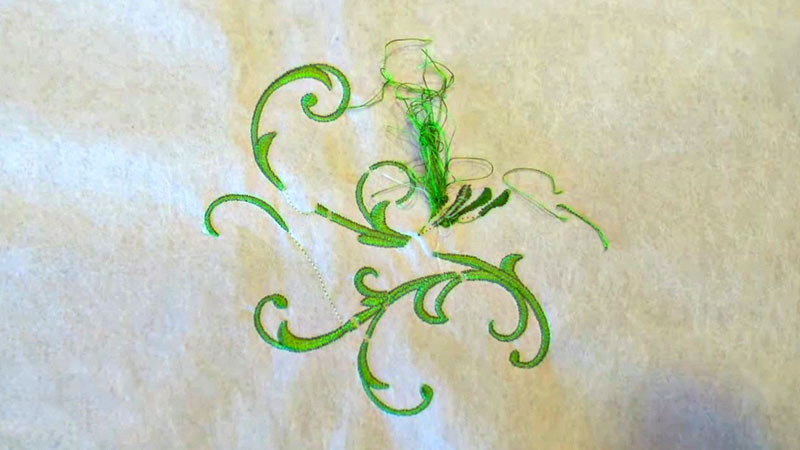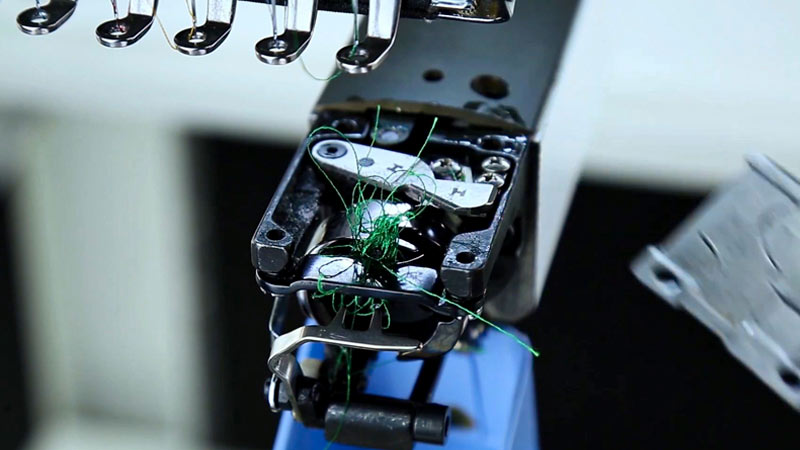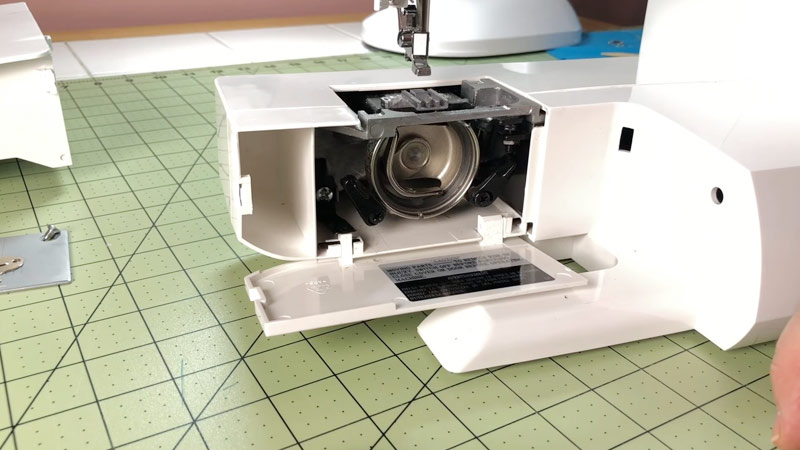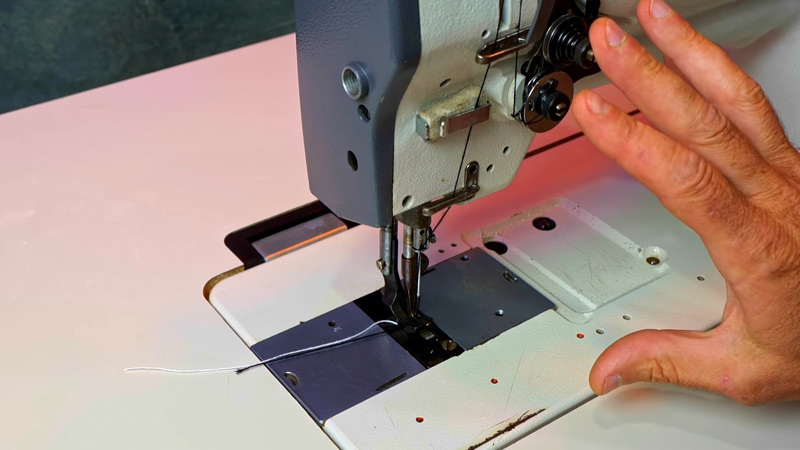Delving into the sewing world and encountering the frustration of bird nesting on your sewing machine can perplex any enthusiast.
The persistent question, “Why Does My Sewing Machine Keep Bird Nesting?” prompts an exploration into the intricate factors contributing to this issue.
Birds nesting, where threads tangle beneath the fabric, can disrupt the creative flow and precision required in sewing projects.
Understanding the underlying causes is paramount for resolving these setbacks and achieving a seamless and enjoyable sewing experience.
This inquiry opens the door to troubleshooting and solutions that address the immediate problem and empower sewers with the knowledge to prevent bird nesting in the future.

Why Does My Sewing Machine Keep Bird Nesting?
Sewing enthusiasts often encounter frustration when their sewing machine starts bird nesting, creating a tangled mess of thread beneath the fabric. Understanding the reasons behind this issue is crucial for maintaining a smooth sewing experience.
Improper Thread Tension
Incorrect tension on the upper or lower thread can lead to bird nesting. Ensure your sewing machine is properly threaded, with the tension set according to the fabric and thread used.
Bobbin Issues
A poorly wound or incorrectly inserted bobbin can contribute to bird nesting. Ensure the bobbin is wound evenly, inserted in the correct direction, and properly seated in the bobbin case.
Thread Quality
Poor-quality or old thread may cause irregular tension, leading to bird nesting. Use high-quality, fresh thread suitable for your fabric.
Needle Problems
A dull or bent needle can disrupt stitching, causing bird nesting. Regularly change needles and use the appropriate type and size for your fabric.
Incorrect Machine Setting
Incorrect settings on the sewing machine, such as stitch length or width, can contribute to bird nesting. Double-check and adjust the settings based on your sewing requirements.
Bobbin Tension Issues
Improper bobbin tension may cause bird nesting. Consult your sewing machine manual to adjust the bobbin tension, ensuring it complements the upper thread tension.
Fabric and Thread Mismatch
Mismatching fabric weight with the thread thickness can result in bird nesting. Ensure a harmonious pairing, adjusting both the thread and fabric to create a seamless sewing process.
By addressing these factors, you can troubleshoot and resolve bird nesting issues, ensuring a smoother and more enjoyable sewing experience with your machine.
Sewing Machine Troubles Causes And Remedies

Embarking on a sewing project only to encounter machine troubles can be disheartening. Understanding the causes and remedies for common issues, such as sewing machine nesting or bird nesting, is essential for a frustration-free sewing experience.
Improper Thread Tension (Cause)
Incorrect thread tension can lead to bird nesting. Ensure proper threading and tension adjustment. Test on a scrap fabric to achieve the right balance for your specific project.
Remedy
Adjust the upper thread tension according to your fabric and thread. A balanced tension ensures smooth stitching without bird nesting.
Bobbin Issues (Cause)
Issues with the bobbin, such as improper winding or insertion, can result in nesting. Ensure the bobbin is correctly wound, inserted, and seated in the bobbin case.
Remedy
Properly wind and insert the bobbin, following the sewing machine manual. Ensure the bobbin is correctly placed in the bobbin case for optimal stitching.
Machine Cleaning (Cause)

Accumulated lint and debris in the bobbin area or feed dogs can cause sewing machine troubles. A dirty machine can lead to bird nesting.
Remedy
Regularly clean your sewing machine, removing lint and debris. Follow the manufacturer’s guidelines for maintenance and cleaning, ensuring optimal performance.
By identifying and addressing these common causes of sewing machine troubles, you can implement effective remedies, ensuring a smoother and more enjoyable sewing experience without the frustration of birds nesting or other issues.
Needle Problems (Cause)
A dull or bent needle can disrupt stitching, causing bird nesting. Regularly change needles and use the appropriate type and size for your fabric.
Remedy
Replace the needle with a new one suited to your fabric. Check the needle position and make sure it is inserted correctly.
Incorrect Thread (Cause)
Using poor-quality or old thread may lead to irregular tension and bird nesting. Opt for high-quality, fresh thread suitable for your fabric.
Remedy
Invest in quality threads and avoid using old or weakened threads. Ensure the thread is compatible with your sewing machine and fabric.
How To Fix My Sewing Machine Bird Nesting?

Encountering bird-nesting issues on your sewing machine can be a frustrating setback. However, understanding how to address and fix these problems is crucial for a seamless sewing experience.
Here are seven ways to troubleshoot and remedy birdnesting sewing machine issues:
Check Thread Tension
Begin by examining the upper thread tension. If it’s too tight or too loose, adjust it accordingly. A balanced tension ensures smooth stitching without bird nesting.
Bobbin Examination
Inspect the bobbin for any issues, such as uneven winding or improper insertion. Re-wind the bobbin if necessary and ensure it’s correctly placed in the bobbin case.
Needle Evaluation
A bent or dull needle can contribute to bird nesting. Replace the needle with a new one, ensuring it is suitable for your fabric and inserted correctly.
Thread Quality
Use high-quality, fresh thread suitable for your fabric. Poor-quality or old thread can cause irregular tension and lead to bird nesting.
Clean the Machine
Lint and debris in the bobbin area or feed dogs can disrupt the sewing process. Regularly clean your sewing machine to prevent bird nesting issues.
Bobbin Tension Adjustment
Incorrect bobbin tension may contribute to bird nesting. Consult your sewing machine manual to adjust the bobbin tension appropriately.
Sewing Machine Maintenance
Regular maintenance is essential. Follow the manufacturer’s cleaning, oiling, and overall care guidelines to ensure optimal performance and prevent birdnesting.
By systematically addressing these aspects, you can troubleshoot and fix bird nesting issues on your sewing machine, allowing you to enjoy a smoother and more productive sewing experience.
FAQs
Can bobbin issues contribute to bird nesting?
Yes, improper bobbin winding or insertion can lead to bird nesting. Ensure the bobbin is wound evenly, inserted correctly, and properly seated in the bobbin case for optimal stitching.
Does needle quality affect bird nesting?
Absolutely, a dull or bent needle can disrupt the stitching process, causing bird nesting. Regularly change needles and use the appropriate type and size for your fabric to prevent this issue.
How does thread quality impact bird nesting?
Poor-quality or old thread may cause irregular tension, leading to bird nesting. Opt for high-quality, fresh thread suitable for your fabric to prevent tangled threads during sewing.
Can cleaning the sewing machine resolve bird nesting?
Yes, accumulated lint and debris in the bobbin area or feed dogs can cause bird nesting. Regularly clean your sewing machine to prevent disruptions and ensure smooth stitching.
Is adjusting bobbin tension necessary to fix bird nesting?
Correct bobbin tension is crucial in preventing bird nesting. Consult your sewing machine manual to adjust the bobbin tension appropriately, ensuring a balanced and smooth stitching process.
Conclusion
The persistence of bird nesting in a sewing machine can be disheartening, but unraveling the mystery behind “Why Does My Sewing Machine Keep Bird Nesting?” leads to effective solutions.
By addressing factors such as thread tension, bobbin issues, needle quality, and machine maintenance, sewers can overcome this common challenge and enhance their crafting endeavors.
The journey from frustration to mastery involves a systematic approach to troubleshooting and implementing remedies, ensuring that the sewing machine becomes a reliable ally rather than a source of setbacks.
With the right knowledge and techniques, sewers can confidently navigate their projects, leaving behind the tangled threads of birds nesting for a smoother and more rewarding sewing experience.
Leave a Reply